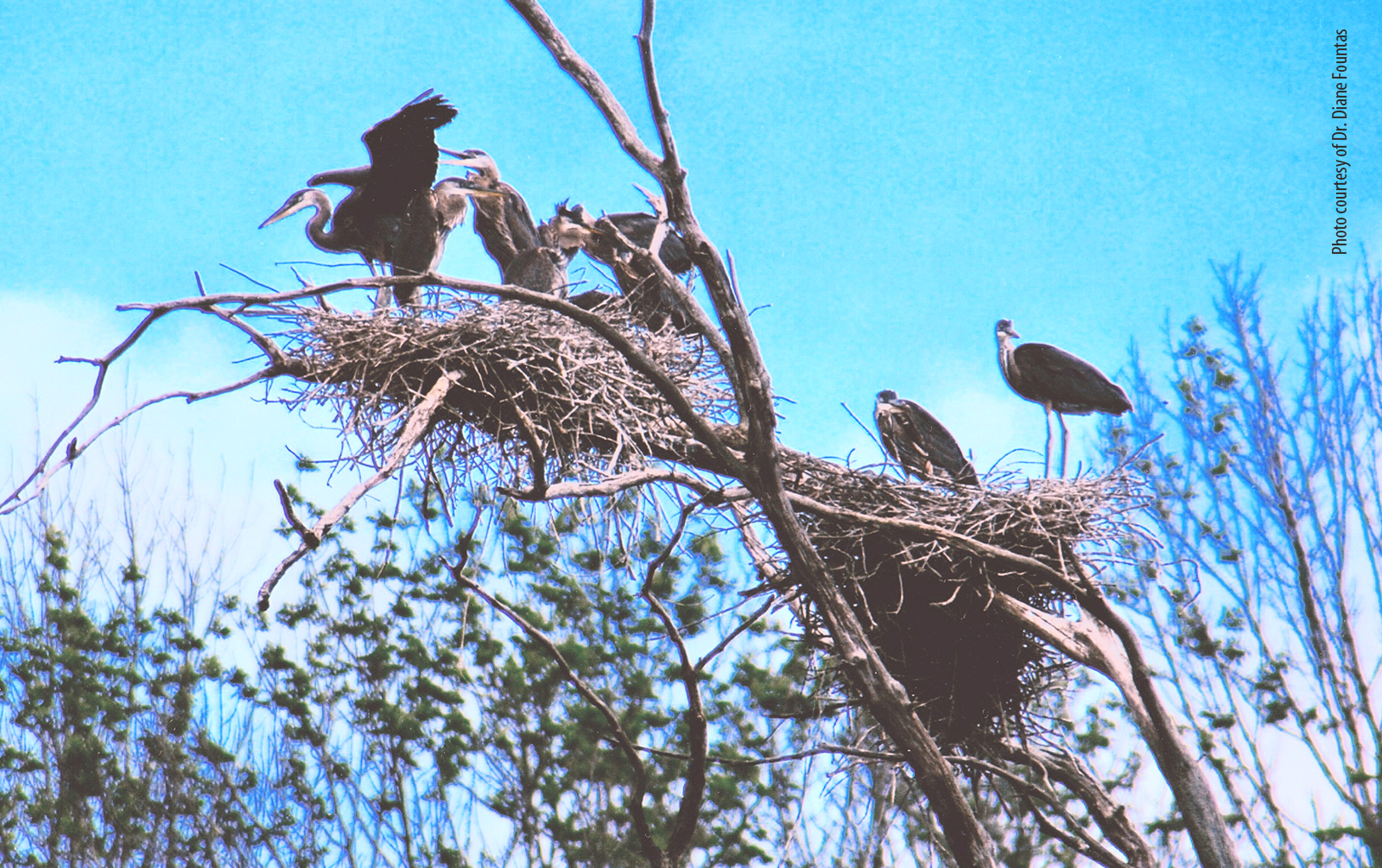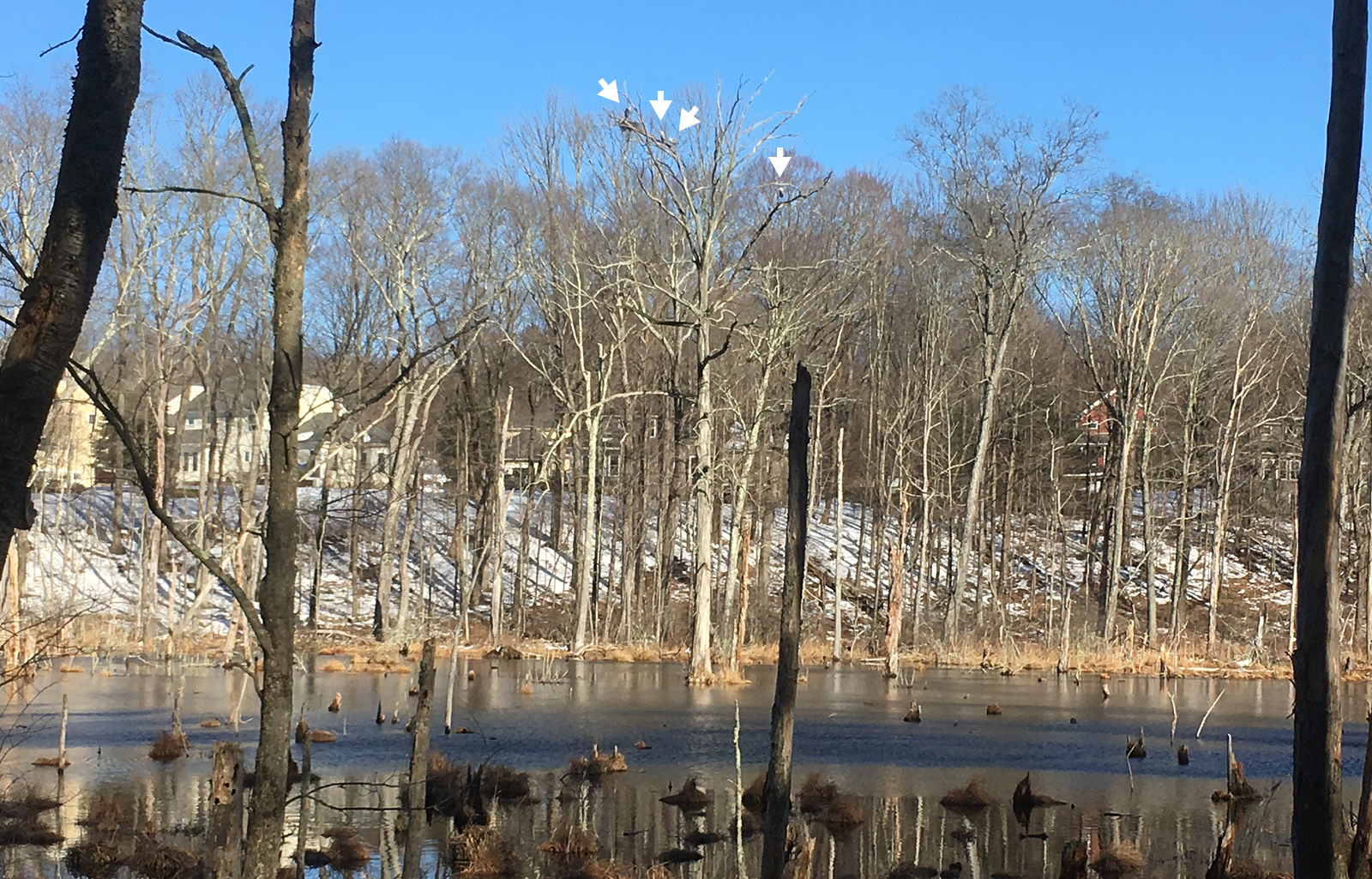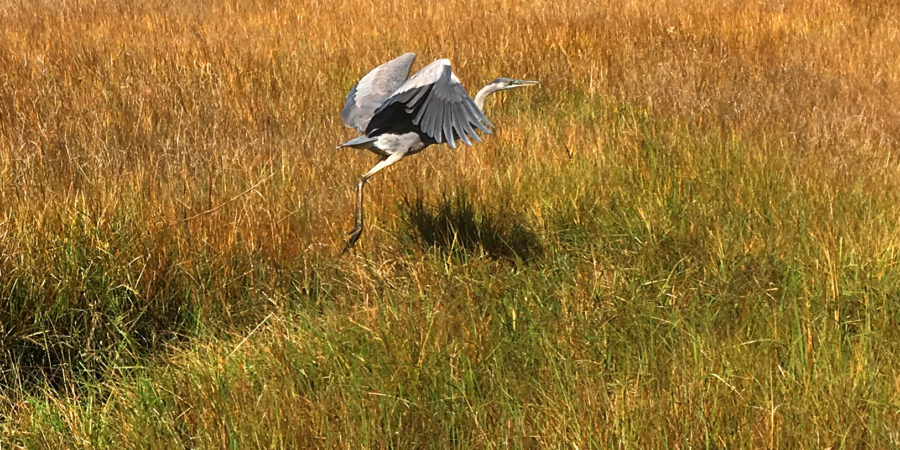It’s the second week of March, and the Great Blue Herons are beginning to appear in the wetlands behind our house. The first arrivals have begun landing atop a few dead White Oak and Sugar Maple trees searching for just the right place to build this year’s nest.
The Great Blue Herons’ squawk is a sound right out of Jurassic Park. And, when six to ten adults square off to vie for nesting spots, it’s as if a flock of Pterodactyls have found their way back from extinction. It begins with a battle for nesting spots on the large, dead tree on the far side of the wetlands. It’s non-stop throughout the day with the birds constantly dive-bombing each other off of wanted branches.
This old White Oak, standing in a few feet of water, rises at least 80 feet high with spreading branches at the top. Over the past 15 years or so it has served as a Great Blue Heron rookery, holding anywhere from three to five nests per season (a small amount for a heron rookery), which we observe on a daily basis.
The next morning after this battle all is peaceful, as if none of the chaos of the previous day ever happened. The heron pairs have each taken their spot on this barkless tree as if each couple has the exact spot they wanted. Now, it’s a continual back and forth of herons bringing sticks to their mates building the nests. The sticks are picked from the ground, as well as, being pulled off the tops of surrounding trees.


FACT: Heron pairs are mostly monogamous during a season, but they choose new partners each year.
The Cornell Lab Of Ornithology
The nests normally hold three to five chicks — normally. One spring we watched in amazement as a nesting pair fed, raised and fledged nine herons in one nest. It takes about two to three weeks for the eggs to hatch. After which, the adults spend most of their time protecting and feeding the young birds. The young wait patiently, quietly, for their feedings. But, once the adult returns to the nest the squawking commences and doesn’t stop until they’ve induced the adult to regurgitate their catch straight down the chicks gullets. As they get older and larger, the squawking becomes even louder and more intense.
The nesting herons grow quickly. Soon the birds look as though they are ready to fledge, hopping from branch to branch, flapping their wings in mock takeoffs. We often sit and cheer them on until at last, one by one, they make the valiant leap to flight. They may come back for a day or two hoping for a free meal, but they’re soon feeding on their own. I’ve yet to see an adult heron feeding one of the young away from their nest.
One day this old tree will fall into the water. The Great Blue Herons will certainly miss this treasured nesting site, but, there are plenty of similar trees in these wetlands to use for their rookery. I know we will miss having grandstand seats from which to view this miracle of nature.
OBSERVATION: Twice, in all these years, a pair of Redtailed Hawks have fought off Great Blue Herons to claim the tree for their nesting spot. In that case, only the one hawk nest is in the tree. I’ve also seen Great Egrets over the years hunting in these wetlands, but, I’ve never observed them nesting here.
